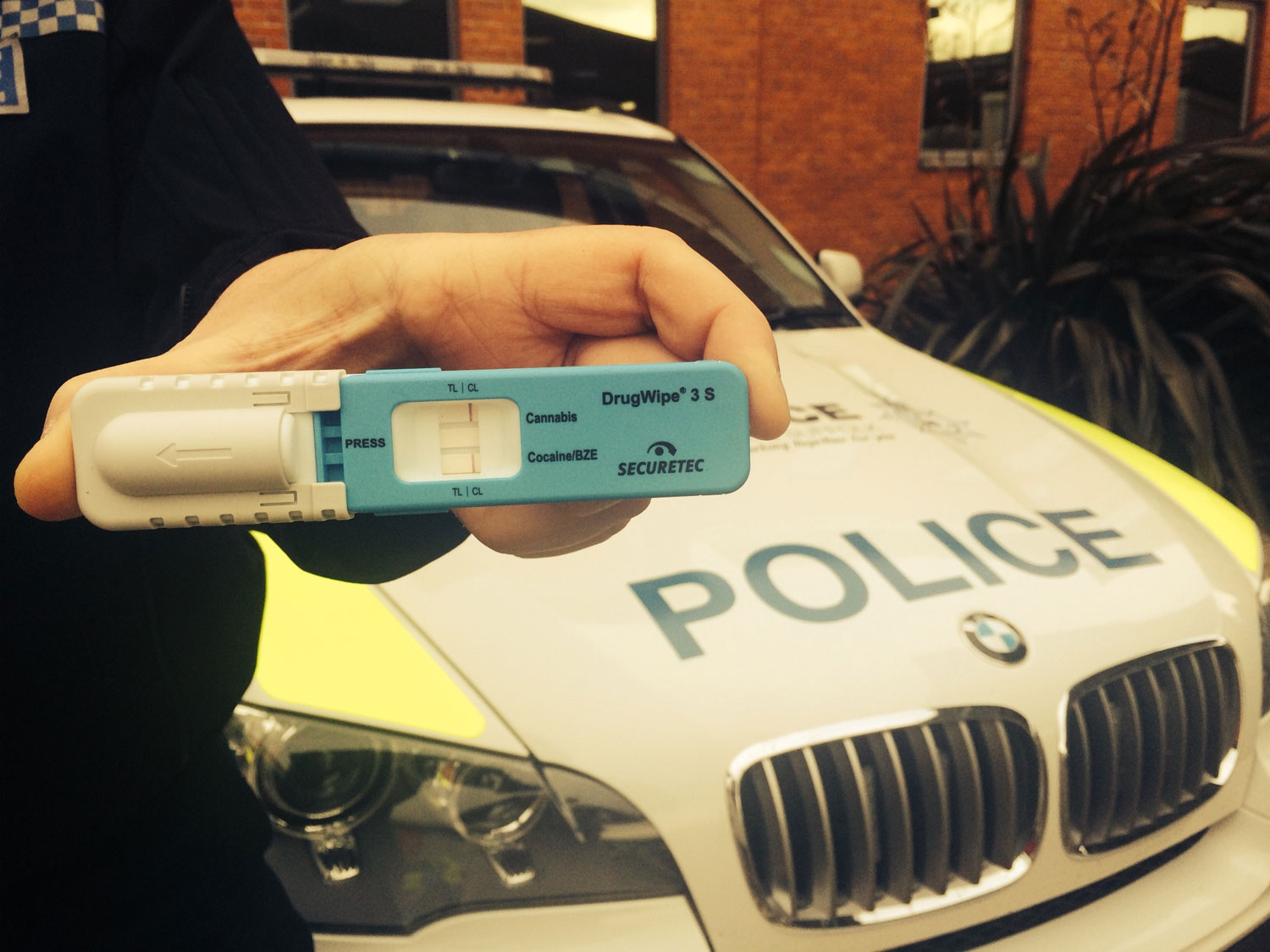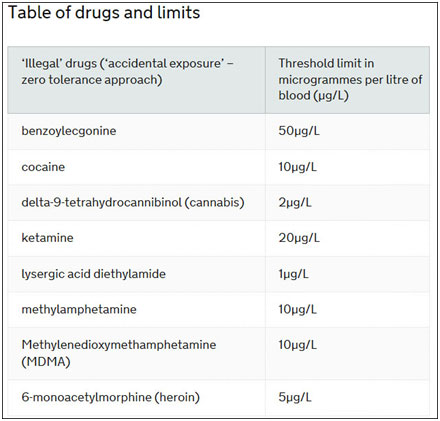
Drink & Drug Driving – The Law
It is illegal to drive if either:
Legal drugs are prescription or over-the-counter medicines. If you are taking them and not sure, if you should drive, talk to your doctor, pharmacist, or healthcare professional.
The police can stop you and make you do a ‘field impairment assessment’ if they think you are on drugs. This is a series of tests, e.g., asking you to walk in a straight line. They can also use a roadside drug kit to screen for cannabis and cocaine.
If they think you are unfit to drive because of taking drugs, you will be arrested and will have to take a blood or urine test at a police station.
You could be charged with a crime if the test shows you have taken drugs.
Prescription medicines
It is illegal in England and Wales to drive with legal drugs in your body if it impairs your driving.
It is an offence to drive if you have over the specified limits of certain drugs in your blood and you have not been prescribed them.
Talk to your doctor about whether you should drive if you have been prescribed any of the following drugs:
You can drive after taking these drugs if:
You could be prosecuted if you drive with certain levels of the drugs listed below and you have not been prescribed them. The law does not cover Northern Ireland and Scotland, but drivers can still be arrested if you are unfit to drive.


Penalties for drug driving
If you are convicted of drug driving, you will get:
Other problems you could face
A conviction for drug driving also means:
How drugs impair driving
Driving under the influence of drugs is extremely dangerous and can affect driving skills in a number of ways.
Cannabis users often think they are safer when they are under the influence because they drive more slowly. However, cannabis slows reaction and decision times. It can also distort perception of time and distance and result in poorer concentration and control of the vehicle.
Cocaine leads to a sense of over-confidence, and this is reflected in the user’s driving style. Users typically perform higher risk and more aggressive maneuvers at greater speeds.
Ecstasy (MDMA) is extremely dangerous to drive on because it results in distorted vision, heightened perception of sounds, altered perception and judgment of risks and an over-confident driving attitude.
During the phase whilst the effects of any illegal drugs are wearing off the user may feel fatigued, affecting concentration levels.
Driving in any of these conditions is a bad idea – not just for the driver but also for any passengers (PCV drivers) and other road users.
NB: No worker should drive or operate vehicles or machinery at work if they have taken alcohol or illicit drugs.
TESTING
As a training company that fervently believes in compliance, we advocate that Drug and Alcohol testing for all commercial drivers should be mandatory. Simply put, if you have nothing to hide, being tested should not present a problem.
Why should every company have an active drug and alcohol program in place?
The benefits of doing so are a big reflection on how you run your business. An employee having an accident and then found to have either drugs or alcohol in their system could potentially be very damaging to you and your company.
The easiest and least intrusive methods of drug testing are saliva and sweat.
Saliva: a sample is taken using a simple swab, which is moved around the mouth, cheeks and under the tongue. This usually takes approximately 30 seconds to soak up a sufficient amount of saliva needed for testing. The machine used by our Testing Company is the Dräger Drug Test 5000 analytical unit. The sample is placed in the analysis unit and the machine will give an indication if drugs are present or not. The process takes approximately 8.5 minutes.
Sweat: the sample to be analysed in this test is taken from the fingertips. The person being tested presses every finger and both thumbs in turn onto a pad and holds each digit in place for 5 seconds. The sample is then placed into the Intelligent Fingerprint Analyser, with the result being returned in approximately 8 minutes. If testing a number of personnel, you can test a bath of up to six samples by confirming this on the Analytical Unit, which will return all 6-sample results in approximately 15 minutes.
There are a number of other different testing methods, such as blood, urine and hair. All of these methods require laboratory testing and you could wait up to a week or more for the results.
For the two units used, Dräger Drug Test 5000 analytical unit and the Intelligent Fingerprint Analyser the accuracy is 95% for each method. These test units are also home office approved.
Road Traffic – Drink and Drug Driving | The Crown Prosecution Service (cps.gov.uk)